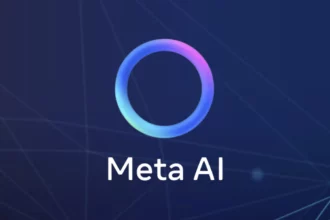Table of Contents
ToggleFDA Launches Generative AI Tool Elsa Ahead of Schedule Despite Budget Cuts
The FDA, facing a 4% budget cut, launches the generative AI tool Elsa a month ahead of schedule to support clinical protocol reviews, scientific evaluations, and prioritize inspections. This move demonstrates the agency’s commitment to innovation despite financial constraints.
FDA Budget Challenges
The FDA confronts a proposed 4% reduction in its budget, trimming it to approximately $6.8 billion. This cut includes the elimination of nearly 1,940 staff salaries. Additionally, around 3,500 employees, some involved in drug review, faced layoffs earlier in the year.
Elsa: Functionality and Deployment
- Elsa is a large language model AI tool aiding the FDA by reading, writing, and summarizing critical documents.
- The tool supports clinical protocol reviews and identifies high-priority inspection targets, enhancing efficiency.
- The platform operates securely within the GovCloud environment, ensuring internal data protection.
- Importantly, Elsa’s underlying models do not train on industry-submitted data, preserving confidentiality.
Strategic Importance and Future Plans
Elsa marks the FDA’s initial step in integrating artificial intelligence across its operations. The agency plans to expand Elsa’s capabilities as it learns from user interactions. This phased approach allows the tool to evolve according to agency needs.
Impact on Drug Review and Approval
The FDA has experienced challenges meeting Prescription Drug User Fee Act (PDUFA) deadlines recently. These included approval delays for treatments such as GSK’s Nucala and Novavax’s COVID-19 vaccine. The adoption of Elsa aims to improve review times while maintaining scientific standards.
Expert Perspectives
The implementation of Elsa represents a significant advancement toward modernizing the FDA’s review process. AI tools like Elsa can help accelerate drug development without compromising scientific rigor, which benefits patients awaiting new treatments.
Key Takeaways
- The FDA implements Elsa, a generative AI tool, ahead of schedule amid a 4% budget cut.
- Elsa supports document review, scientific evaluation, and prioritizes inspection targets within a secure platform.
- The FDA plans to expand Elsa’s functions as part of a broader AI integration strategy.
- Recent delays in drug approvals highlight the need for tools like Elsa to improve review efficiency.
- Experts recognize Elsa as a positive step towards faster and cost-effective drug evaluations.
FDA Defies the Odds: Launching AI Tool Elsa Despite Budget Cuts
Facing a 4% budget cut, the FDA doesn’t hit pause. Instead, it speeds ahead, launching a new generative AI tool named Elsa a whole month early. This is no small feat considering the agency’s budget is shrinking to about $6.8 billion, trimming nearly 2,000 staffers in the process.
So, how does one innovate amid such constraints? Let’s dive into the story behind Elsa, the FDA’s bold AI leap, and what it means for drug reviews and patient outcomes.
Budget Blues: Cutting Staff But Not Innovation
The FDA’s financial picture looks tight with a 4% cut looming from earlier proposals under the Trump administration. This reduction translates to fewer hands on deck—approximately 1,940 employees have been let go. In April alone, about 3,500 FDA workers, including those directly involved in drug review processes, faced layoffs.
Yet, instead of slowing down, the FDA turns to tech, unveiling Elsa—short for something cool, presumably—early and under budget. This move signals one thing loud and clear: budget cuts won’t stop progress.
What Is Elsa, and Why Should You Care?
Elsa is a large language model, a type of generative AI trained to read, write, and summarize vast amounts of information quickly. Imagine a supercharged assistant who never sleeps, tirelessly scanning through clinical protocols, scientific papers, and inspection targets with laser precision.
The tool is already actively supporting three critical tasks:
- Clinical protocol reviews
- Scientific evaluations
- Identifying high-priority inspection targets
Security First: Elsa’s Home on GovCloud
Privacy concerns? The FDA thought of that. Elsa operates within the secure GovCloud environment, protecting sensitive data. Importantly, while Elsa accesses internal agency documents, the AI model doesn’t train on submissions from drug or medical device companies. So, trade secrets and proprietary info remain locked away safely.
The Beginning of an AI-Powered FDA
Elsa is only the first chapter in what the FDA calls its “AI journey.” The agency plans to embed AI deeper into its workflows as it learns how employees interact with Elsa. The development team aims to continually expand Elsa’s abilities, tailoring it to evolving needs.
That said, we haven’t yet seen how Elsa affects review timelines. Since January, the FDA has missed several PDUFA (Prescription Drug User Fee Act) deadlines, delaying critical drug approvals, such as:
- GSK’s Nucala for chronic obstructive pulmonary disease
- Novavax’s protein-based COVID-19 vaccine
- Stealth BioTherapeutics’ treatment for an ultra-rare disease
Will Elsa speed things up, or is there more work to do? Time will tell.
Why AI Could Be the Gamechanger the FDA Needs
“When used safely, AI can help speed up clinical trials and the drug review process,” experts say.
Imagine slashing review times without cutting corners on safety. That’s the promise Elsa holds. By rapidly summarizing complex data, Elsa frees human experts to focus on tough decisions, potentially accelerating drug approvals.
Experts applaud the FDA’s bold step. It’s seen as progress toward making drug development faster and more cost-effective. Patients win when new therapies reach them sooner—without compromising on scientific rigor.
Real Talk: What This Means for Everyone
For the FDA workforce, Elsa offers a helping hand amid shrinking teams. For pharmaceutical companies, it could mean less waiting, streamlined protocols, and clearer expectations. Patients? Faster access to treatments that save and improve lives.
However, AI tools like Elsa require constant tuning and oversight. The FDA’s cautious approach—rolling out Elsa ahead of schedule but within a secure environment—reflects a balance between innovation and responsibility.
Looking Forward: Keeping an Eye on AI Integration
How will Elsa evolve? The next few months could decide whether AI becomes an FDA staple or just a high-tech experiment. The agency’s commitment to expanding Elsa’s capabilities suggests they’re betting on AI’s power.
After all, the pressure of shrinking budgets and staffing means the FDA must find smarter ways to do more with less. Elsa’s early arrival sends a message: innovation doesn’t wait for perfect conditions.
Final Thoughts
The FDA’s launch of Elsa amid a 4% budget cut is a story of resilience and savvy use of technology. It’s a clear line in the sand—those who expect the FDA to slow down may be surprised instead by this agency’s acceleration of smart, AI-driven change.
Will Elsa revolutionize the drug review process, improving both speed and safety? That question hangs in the air, inviting stakeholders to watch closely—and perhaps be ready for a future where AI and regulators work hand in hand.
In the meantime, one thing is certain: when budget cuts threaten, the FDA chooses innovation over inertia.
What is the purpose of the FDA’s AI tool Elsa?
Elsa is designed to help with reading, writing, and summarizing. It assists in clinical protocol reviews, scientific evaluations, and identifying high-priority inspection targets to enhance the FDA’s work.
How does Elsa maintain security and data privacy?
Elsa operates within a secure GovCloud platform. It has access to internal documents but does not train on data submitted by drug and medical device companies, ensuring sensitive information remains protected.
How might Elsa affect the FDA’s drug review times?
It is unclear if Elsa will speed up review times yet. The FDA has missed several approval deadlines recently. However, AI could help streamline processes if used properly.
Why was Elsa launched ahead of schedule despite a 4% budget cut?
Collaboration among in-house experts helped deliver Elsa under budget and a month early. This shows the FDA’s commitment to innovation despite financial challenges and staff reductions.
What future plans does the FDA have for AI integration?
Elsa is the first AI step for the FDA. The agency plans to expand AI use across more processes based on employee feedback and evolving needs to improve efficiency and effectiveness.





